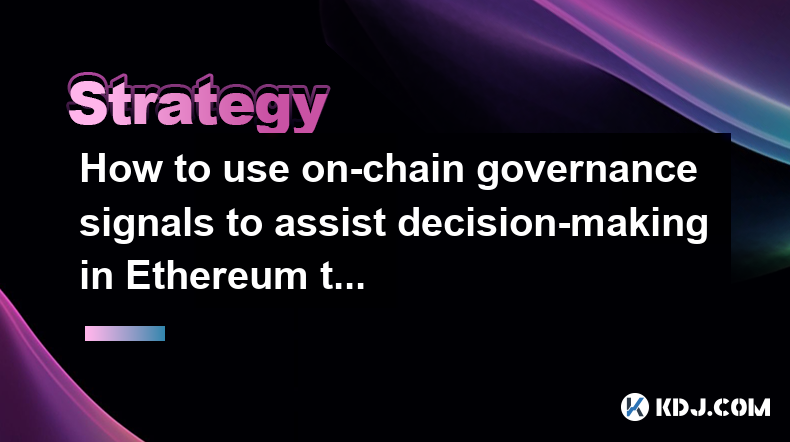-
 Bitcoin
Bitcoin $92,358.2066
-3.78% -
 Ethereum
Ethereum $2,514.7602
-9.86% -
 Tether USDt
Tether USDt $0.9997
-0.05% -
 XRP
XRP $2.3198
-9.01% -
 BNB
BNB $615.1517
-5.58% -
 Solana
Solana $141.5976
-13.50% -
 USDC
USDC $0.9999
0.00% -
 Dogecoin
Dogecoin $0.2129
-10.09% -
 Cardano
Cardano $0.6902
-9.30% -
 TRON
TRON $0.2423
-1.03% -
 Chainlink
Chainlink $15.3578
-11.56% -
 Stellar
Stellar $0.3026
-7.89% -
 Avalanche
Avalanche $21.9097
-10.49% -
 Sui
Sui $2.8963
-13.71% -
 Litecoin
Litecoin $116.0955
-8.81% -
 Toncoin
Toncoin $3.4452
-8.48% -
 Hedera
Hedera $0.1998
-4.22% -
 Shiba Inu
Shiba Inu $0.0...01392
-8.66% -
 UNUS SED LEO
UNUS SED LEO $8.8000
-9.83% -
 MANTRA
MANTRA $8.2347
-1.71% -
 Polkadot
Polkadot $4.4422
-9.05% -
 Hyperliquid
Hyperliquid $19.7104
-13.10% -
 Ethena USDe
Ethena USDe $0.9999
-0.03% -
 Bitcoin Cash
Bitcoin Cash $296.1569
-8.43% -
 Bitget Token
Bitget Token $4.7267
-6.13% -
 Dai
Dai $0.9998
-0.02% -
 Uniswap
Uniswap $8.0773
-9.39% -
 Monero
Monero $230.9033
-2.23% -
 NEAR Protocol
NEAR Protocol $3.0560
-9.30% -
 Bittensor
Bittensor $404.0531
-4.16%
Do stablecoins have investment value?
Stablecoins offer price stability to reduce volatility, enable international payments, access DeFi applications, and provide investment opportunities, making them valuable additions to a diversified portfolio, although they face risks such as counterparty and smart contract risks, regulatory uncertainties, and market volatility.
Jan 08, 2025 at 09:52 pm

Key Points
- Understanding the Nature and Types of Stablecoins
- Assessing the Stability Mechanisms of Stablecoins
- Evaluating the Investment Potential of Stablecoins
- Reviewing Stablecoin Risk Considerations
- Identifying and Comparing Popular Stablecoins
- Exploring Use Cases and Adoption of Stablecoins
- Assessing the Regulatory Framework Surrounding Stablecoins
Do Stablecoins Have Investment Value?
Understanding Stablecoins and Their Types
Stablecoins are cryptocurrencies designed to maintain a stable value relative to a fiat currency (e.g., USD) or other assets (e.g., gold). They aim to provide a less volatile alternative to traditional cryptocurrencies like Bitcoin while still offering the benefits of blockchain technology. Stablecoins can be classified into several types:
Fiat-Collateralized Stablecoins: Backed by reserves of fiat currency held in a trusted third-party account.
Crypto-Collateralized Stablecoins: Over-collateralized by other cryptocurrencies, ensuring stability even during market fluctuations.
Algorithmic Stablecoins: Use smart contracts to manage the supply and demand of the stablecoin, adjusting the circulating supply to maintain its peg.
Commodity-Collateralized Stablecoins: Backed by physical assets such as gold or real estate, providing stability through the underlying asset's value.
Assessing Stablecoin Stability Mechanisms
The stability of stablecoins is crucial for their investment value. The mechanisms employed to maintain stability vary:
Centralized Control: Fiat-collateralized stablecoins rely on trusted third parties to manage the reserves and ensure the peg.
Over-Collateralization: Crypto-collateralized stablecoins maintain a collateral ratio above 100%, providing a buffer against market volatility.
Expansionary and Contractionary Monetary Policy: Algorithmic stablecoins use a feedback loop to adjust the supply, contracting it during price increases and expanding it during price decreases.
Commodity Backing: Commodity-collateralized stablecoins' stability is tied to the underlying asset's value and the reliability of the custodian.
Evaluating Stablecoin Investment Potential
Stablecoins present potential investment opportunities due to their:
Price Stability: Their peg to fiat currencies or other assets minimizes price fluctuations, reducing the risk of large losses.
Interest Earnings: Some stablecoins offer interest returns through lending or staking, providing passive income for investors.
Diversification Option: Stablecoins can diversify a portfolio, reducing overall volatility while maintaining exposure to the crypto market.
Gateway to DeFi: Stablecoins serve as a medium of exchange for decentralized finance (DeFi) applications, enabling access to various yield-generating protocols and markets.
Stablecoin Risk Considerations
Despite their stability, stablecoins face certain risks:
Counterparty Risk: Centralized fiat-collateralized stablecoins rely on the solvency and reliability of the institutions holding the reserves.
Smart Contract Risk: Algorithmic stablecoins depend on the integrity of their smart contracts, which could be compromised through hacks or exploits.
Regulatory Uncertainties: Stablecoins fall under regulatory scrutiny, with unclear regulations in many jurisdictions, potentially affecting their stability and investment value.
Market Volatility: While stablecoins aim for stability, they can experience temporary price fluctuations during prolonged market turbulence.
Popular Stablecoins and Their Features
Several stablecoins have gained significant adoption:
Tether (USDT): Fiat-collateralized stablecoin, largest by market capitalization.
USD Coin (USDC): Fiat-collateralized stablecoin, backed by a consortium of regulated exchanges and custodians.
Binance USD (BUSD): Fiat-collateralized stablecoin, issued by cryptocurrency exchange Binance.
Dai (DAI): Algorithmic stablecoin, collateralized by Ether (ETH).
TrueUSD (TUSD): Fiat-collateralized stablecoin, audited by a licensed accounting firm.
Stablecoin Use Cases and Adoption
Stablecoins have numerous use cases in the crypto ecosystem:
Trading: Replacing fiat currencies in cryptocurrency markets, minimizing conversion fees and delays.
Cross-Border Payments: Simplifying and reducing costs associated with international money transfers.
DeFi Applications: Facilitating lending, borrowing, and yield farming activities within decentralized finance platforms.
Remittances: Providing a quick and cost-effective way to send money across borders.
Assessing Regulatory Framework for Stablecoins
Regulatory efforts are underway to address the risks associated with stablecoins:
Central Bank Digital Currencies (CBDCs): Government-issued digital currencies aiming to bridge the gap between traditional fiat and cryptocurrencies.
Stablecoin Legislation: Some jurisdictions have implemented or are considering legislation to regulate stablecoins, including anti-money laundering (AML) and know-your-customer (KYC) requirements.
Banking Industry Initiatives: Banks and financial institutions are collaborating to develop stablecoins backed by traditional banking reserves.
FAQs
What are the benefits of buying stablecoins?
Stablecoins offer price stability, reduce volatility, facilitate international payments, enable access to DeFi applications, and provide potential investment returns.
What are the risks of investing in stablecoins?
Stablecoins face counterparty risk, smart contract risks, regulatory uncertainties, and market volatility, which can affect their price stability and investment value.
What are the best ways to choose a stablecoin for investment?
Consider the stability mechanism used, the credibility of the issuing entity, the regulatory environment, and the use cases relevant to your investment strategy.
What are the potential future applications of stablecoins?
Stablecoins have the potential to revolutionize international payments, cross-border remittances, and traditional banking by providing a bridge between fiat currencies and the crypto ecosystem.
Disclaimer:info@kdj.com
The information provided is not trading advice. kdj.com does not assume any responsibility for any investments made based on the information provided in this article. Cryptocurrencies are highly volatile and it is highly recommended that you invest with caution after thorough research!
If you believe that the content used on this website infringes your copyright, please contact us immediately (info@kdj.com) and we will delete it promptly.
- FXGuys: The Next Crypto Millionaire Maker?
- 2025-02-25 11:10:28
- WallitIQ (WLTQ): The Underrated AI Coin Set To Skyrocket To $7
- 2025-02-25 11:05:29
- XRP, ETH and DOGE Reach Turning Points as Market Sentiment Turns Bearish
- 2025-02-25 11:00:28
- BNB Chain's Rise and the Competitive MEME Token Landscape
- 2025-02-25 11:00:28
- Michaël van de Poppe Predicts a Bullish Phase for This Ethereum (ETH) Rival, Says XRP (XRP) and Sui (SUI) Face Key Tests
- 2025-02-25 11:00:28
- XRP, Ethereum, and Dogecoin: Navigating the Crypto Market’s Tightrope
- 2025-02-25 11:00:28
Related knowledge

How to utilize long-short hedging strategies in Ethereum trading?
Feb 25,2025 at 09:07am
Key Points:Understand the concept of long-short hedgingChoose appropriate assets for long and short positionsManage risk and leverageMonitor positions and adjust as neededExplore advanced strategiesHow to Utilize Long-Short Hedging Strategies in Ethereum Trading:1. Comprehend Long-Short HedgingLong-short hedging involves simultaneously holding opposite ...

How to use on-chain governance signals to assist decision-making in Ethereum transactions?
Feb 25,2025 at 07:06am
Key PointsOn-chain governance signals allow individuals to participate and influence the decision-making process of Ethereum-related projects and protocols.These signals help users make more informed decisions, especially when performing complex transactions involving Ethereum or dealing with advanced protocols like decentralized exchanges.Monitoring on...

How to deal with black swan events in Ethereum trading?
Feb 25,2025 at 05:18am
Key Points:Understand the nature and characteristics of black swan eventsImplement risk management strategies to mitigate potential lossesEmploy advanced trading techniques to exploit market fluctuationsStay informed and adaptable to evolving market conditionsLeverage social media and community support for insights and guidanceHow to Deal with Black Swa...

How to use technical indicators to make decisions in Ethereum transactions?
Feb 25,2025 at 10:06am
Key Points:Identify market trends and price action using technical indicators.Employ moving averages to gauge price direction and support/resistance levels.Utilize Bollinger Bands to determine market volatility and potential reversals.Leverage Relative Strength Index (RSI) to measure market momentum.Implement Stochastic Oscillator to identify overbought...

What are the arbitrage strategies in Ethereum liquidity mining?
Feb 25,2025 at 10:24am
Key Points of Ethereum Liquidity Mining Arbitrage StrategiesSpot arbitrage: Exploiting price differences between Ethereum spot markets to buy low and sell highTriangle arbitrage: Capitalizing on three-way price discrepancies among Ethereum pairs to generate risk-free returnsCross-chain arbitrage: Leveraging price disparities between Ethereum and other b...

What impact does Ethereum Gas fee fluctuation have on trading strategies?
Feb 25,2025 at 06:36am
Key Points:Understand the concept of Ethereum gas fees and their impact on trading strategies.Explore the factors influencing gas fee fluctuations and their implications for traders.Identify strategies to mitigate the impact of high gas fees on trading.Understanding Ethereum Gas FeesEthereum gas fees represent the transaction costs associated with execu...

How to utilize long-short hedging strategies in Ethereum trading?
Feb 25,2025 at 09:07am
Key Points:Understand the concept of long-short hedgingChoose appropriate assets for long and short positionsManage risk and leverageMonitor positions and adjust as neededExplore advanced strategiesHow to Utilize Long-Short Hedging Strategies in Ethereum Trading:1. Comprehend Long-Short HedgingLong-short hedging involves simultaneously holding opposite ...

How to use on-chain governance signals to assist decision-making in Ethereum transactions?
Feb 25,2025 at 07:06am
Key PointsOn-chain governance signals allow individuals to participate and influence the decision-making process of Ethereum-related projects and protocols.These signals help users make more informed decisions, especially when performing complex transactions involving Ethereum or dealing with advanced protocols like decentralized exchanges.Monitoring on...

How to deal with black swan events in Ethereum trading?
Feb 25,2025 at 05:18am
Key Points:Understand the nature and characteristics of black swan eventsImplement risk management strategies to mitigate potential lossesEmploy advanced trading techniques to exploit market fluctuationsStay informed and adaptable to evolving market conditionsLeverage social media and community support for insights and guidanceHow to Deal with Black Swa...

How to use technical indicators to make decisions in Ethereum transactions?
Feb 25,2025 at 10:06am
Key Points:Identify market trends and price action using technical indicators.Employ moving averages to gauge price direction and support/resistance levels.Utilize Bollinger Bands to determine market volatility and potential reversals.Leverage Relative Strength Index (RSI) to measure market momentum.Implement Stochastic Oscillator to identify overbought...

What are the arbitrage strategies in Ethereum liquidity mining?
Feb 25,2025 at 10:24am
Key Points of Ethereum Liquidity Mining Arbitrage StrategiesSpot arbitrage: Exploiting price differences between Ethereum spot markets to buy low and sell highTriangle arbitrage: Capitalizing on three-way price discrepancies among Ethereum pairs to generate risk-free returnsCross-chain arbitrage: Leveraging price disparities between Ethereum and other b...

What impact does Ethereum Gas fee fluctuation have on trading strategies?
Feb 25,2025 at 06:36am
Key Points:Understand the concept of Ethereum gas fees and their impact on trading strategies.Explore the factors influencing gas fee fluctuations and their implications for traders.Identify strategies to mitigate the impact of high gas fees on trading.Understanding Ethereum Gas FeesEthereum gas fees represent the transaction costs associated with execu...
See all articles

















































































